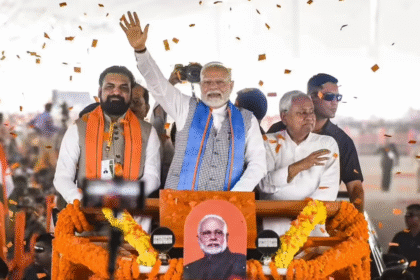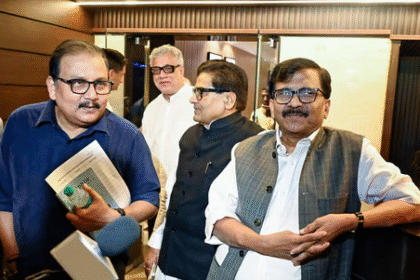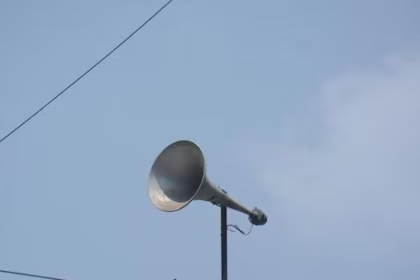Air India Plane Crash: Pilots’ Body Alleges AAIB Report Shows Bias, Demands Fair Fact-Based Inquiry
On a storm-laden day in Indian aviation history, an Air India Express aircraft veered off the runway while attempting to land at Kozhikode Airport in Kerala, resulting in a catastrophic crash. The tragic incident led to the death of multiple passengers and crew members, including the pilots, while injuring several others. The nation’s collective grief was matched only by its urgent demand for answers.
In the months that followed, the Aircraft Accident Investigation Bureau (AAIB) of India conducted a formal inquiry into the crash. While the official AAIB report attributed the probable cause primarily to pilot error, the conclusions sparked a fresh wave of controversy—especially among India’s professional pilot community. The Indian Commercial Pilots’ Association (ICPA) and other aviation bodies have strongly criticized the report, alleging institutional bias and an unfair over-reliance on attributing the cause to human error, without equally evaluating systemic, infrastructural, or environmental shortcomings.
In this 10-part comprehensive article, we explore not only the technical and procedural dimensions of the crash but also the socio-political ramifications of the investigation’s outcome. We examine what the AAIB report says, what it omits, and why the pilots’ body is insisting on a fact-based, impartial inquiry. This is not merely a debate about technical details—it is about accountability, fairness, aviation safety, and the future of trust in India’s civil aviation system.
The Incident: A Routine Flight That Ended in Disaster
The aircraft involved in the crash was a Boeing 737-800, operating Air India Express Flight IX 1344 under the Vande Bharat repatriation mission during the COVID-19 pandemic. It was carrying stranded Indian nationals home from Dubai. On August 7, 2020, during its final approach to Kozhikode International Airport—a table-top runway in heavy rain conditions—the aircraft overshot the runway, breached the perimeter wall, and split in two.
The crash killed 21 people, including the captain and co-pilot, and left over 75 passengers injured, many critically. Given the challenging weather conditions and runway configuration, questions immediately surfaced about whether the airport’s infrastructure, Air Traffic Control decisions, or aircraft condition also played contributory roles.
Initial Reactions: Heroism and Tragedy Collide
In the immediate aftermath of the crash, the narrative was mixed. While mourning the loss of lives, media coverage initially hailed the pilots as heroes—emphasizing that they had attempted to land safely despite poor visibility and challenging terrain. Survivors credited the crew’s calm during descent and said the pilots avoided a more deadly collision with nearby structures by maneuvering as best they could.
However, as the official probe began and attention shifted from survivor accounts to regulatory processes, the tone changed. The eventual AAIB report would mark a turning point—not just in how the crash was interpreted, but in how the relationship between pilots and regulators is now being questioned.
The AAIB Report: Findings and Focal Points
The Aircraft Accident Investigation Bureau’s final report on the crash concluded that pilot error was the primary cause. According to the document:
- The flight crew continued an unstable approach despite tailwinds, which exceeded permissible landing parameters.
- The aircraft touched down 1,000 meters beyond the runway threshold, leaving insufficient distance for braking.
- It also noted the failure of the crew to perform a go-around, despite warnings and automated alerts.
While the report did acknowledge some environmental and infrastructural conditions—such as rain, runway slope, and inadequate friction testing—it framed these as secondary or contributory factors, placing ultimate blame squarely on human decision-making.
Pilots’ Body Pushes Back: ‘Bias Against Dead Men Can’t Be Investigated’
The Indian Commercial Pilots’ Association (ICPA), representing hundreds of airline pilots across the country, took strong exception to the findings. In a letter addressed to the Ministry of Civil Aviation, the ICPA stated:
“The findings of the AAIB appear to follow a predetermined narrative—one that unfairly blames the pilots, both of whom perished in the crash and cannot defend themselves. It is imperative that investigations remain neutral, especially in the absence of live testimonies from the individuals being held responsible.”
The pilots’ body pointed to the lack of systemic analysis—particularly the design of the table-top runway, the deficient runway surface condition, and the lack of timely airport upgrades, as failures that could have contributed significantly. They alleged that by fixating on pilot behavior, the report conveniently absolved other stakeholders, including the airport operator, the Directorate General of Civil Aviation (DGCA), and Air Traffic Control (ATC).
The Role of Table-Top Runways and Infrastructure Limitations
One cannot discuss the Kozhikode crash without addressing the airport’s unique design. Table-top runways are elevated landing strips, typically surrounded by gorges or steep drop-offs. They offer minimal margin for error and require precision landings, particularly during wet or poor visibility conditions.
Experts have long raised red flags about Kozhikode Airport:
- Lack of Engineered Material Arresting Systems (EMAS) at the runway’s end
- Insufficient runway extension buffers
- Poor water drainage, which reduces friction
- Repeated requests for infrastructure overhaul pending with authorities for years
Despite these known issues, the airport continued operations with limited upgrades. This raises a crucial question: even if pilot error occurred, could the infrastructure have prevented a fatal outcome had it been up to international standards?
The pilots’ union argues that these questions were insufficiently addressed in the AAIB report, and they fear that institutional complacency is being masked behind a human scapegoat.
A Pattern of Institutional Blame?
The controversy surrounding this report is not without precedent. Aviation unions in India have, in the past, flagged a recurring pattern:
- In multiple incidents, investigation reports have leaned heavily on pilot error as the root cause.
- Systemic issues such as crew fatigue, poor rostering practices, training gaps, and lack of simulator hours have often been overlooked.
- Regulatory bodies rarely assign culpability to policy-level lapses or organizational failures.
This has led to growing distrust between pilots and investigative authorities. The Air India Express crash may become the defining case in the debate over whether Indian aviation is evolving toward a just culture—one that balances accountability with fairness—or falling into a blame culture, where dead pilots bear the brunt of systemic failures.
Conclusion of Part 1: A Call for Transparency, Not Tokenism
The Kozhikode crash was a tragedy. The families of those who died, including the pilots, deserve truth—not just closure. But truth, in a sector as complex as aviation, must be multi-dimensional. It cannot rest solely on cockpit decisions captured by a black box. It must include infrastructure, governance, maintenance records, and real-time conditions.
By challenging the AAIB’s conclusions, India’s pilot community is not evading accountability. Rather, they are demanding that accountability be shared proportionately across the ecosystem. In doing so, they are asking India’s aviation system to be as rigorous with institutions as it is with individuals.
Decoding the Report — Inside the Flight Data and the Moments Before the Crash
To fully understand the gravity of the Air India Express crash at Kozhikode and the controversy surrounding the AAIB’s findings, we must dive into the data—the black box recordings, cockpit voice transcripts, environmental inputs, and approach trajectory models. This is where the technical fabric of the investigation resides, and where the disagreement begins.
At the heart of the AAIB’s report is the assumption that pilot error was the primary cause of the accident. This conclusion is drawn heavily from the data retrieved from the aircraft’s Flight Data Recorder (FDR) and Cockpit Voice Recorder (CVR)—collectively referred to as the “black boxes.” However, aviation unions and technical experts argue that this reliance on numerical and procedural data, while necessary, was not sufficient to explain the full picture.
This section examines what the black boxes revealed, what the AAIB emphasized, what it downplayed, and why pilots and aviation observers remain unconvinced by the investigation’s framing.
The Final Approach: Reconstructing the Sequence of Events
Flight IX 1344 was scheduled to land at Kozhikode International Airport (Calicut) around 7:40 PM IST on August 7, 2020. It was raining heavily at the time of arrival, with low visibility, tailwinds, and a wet runway surface.
According to the FDR data and the AAIB timeline, here’s what transpired in the final critical minutes:
- The aircraft attempted a landing on Runway 10, which has a table-top configuration with a steep slope and limited Runway End Safety Area (RESA).
- The pilots disengaged the autopilot and continued with a manual approach.
- The aircraft touched down approximately 4,000 feet from the threshold, well beyond the recommended touchdown zone.
- Despite the wet runway and tailwind, the crew did not execute a go-around and attempted to stop the aircraft.
- The aircraft skidded, broke through the perimeter wall, and fell into a ravine, splitting into two.
From a procedural standpoint, the landing was non-compliant with standard operating protocols, which require a go-around when safe landing is no longer assured. However, aviation is not merely about adherence to procedure—it’s about real-time decision-making in high-pressure, variable environments.
CVR Analysis: Voice, Stress, and Split-Second Judgments
The Cockpit Voice Recorder transcripts included in the report reveal crucial psychological insights into the flight crew’s state of mind:
- Communication between the captain and first officer was clear but increasingly tense.
- Weather-related concerns were noted, but no panic or misjudgment is clearly audible.
- The captain allegedly decided to land despite observing runway conditions that were far from ideal.
The report implies that there was sufficient time to initiate a go-around, but critics argue that visibility, wind speed, and confidence in terrain familiarity may have complicated the captain’s ability to reassess the landing approach mid-descent.
Moreover, no psychological analysis of crew fatigue, cumulative stress, or pandemic-related pressure (as this was a Vande Bharat mission) was meaningfully incorporated into the AAIB’s assessment.
Runway Configuration and Environmental Challenges
Runway 10 at Kozhikode is one of India’s most challenging airstrips. A table-top runway is elevated and typically surrounded by deep gorges on either side. Kozhikode has had past incidents and multiple near-misses, and the aviation community has consistently warned about its vulnerabilities.
Key environmental and infrastructural data:
- Runway Length: 2,850 meters
- Runway Surface: Wet due to heavy rainfall, with low friction coefficient (braking efficiency compromised)
- Tailwind at time of landing: ~16 knots, exceeding recommended limits
- Visibility: Below standard minimums for stabilized approaches
- No EMAS (Engineered Material Arresting System): Despite repeated recommendations
These factors were acknowledged in the AAIB report but were largely designated as “contributory,” not causal. This distinction is crucial. Pilots’ associations argue that in a safety investigation, equal weight must be given to all potential failure points, especially those involving infrastructure and airport design.
Alternate Runway Availability and Decision-Making Window
One of the most discussed criticisms in the AAIB report was the crew’s decision not to land on Runway 28, which had headwind and therefore better landing conditions. The report notes that ATC had cleared the flight to land on either side, but the flight crew chose Runway 10.
While this is technically true, critics argue:
- The wind conditions at altitude vs. on the runway surface may have differed, affecting judgment.
- The topographical familiarity of Runway 10 may have influenced the decision under time pressure.
- Fatigue and weather-induced anxiety may have caused a “get-home-itis” bias, a known phenomenon in aviation psychology where pilots press on to complete a flight in adverse conditions.
Again, the lack of contextual human factors analysis weakens the argument that this was a clear-cut case of procedural failure.
The Argument for Systemic Accountability
If the same data had been applied in a jurisdiction with Just Culture principles—where safety investigations aim to learn, not blame—it’s likely the findings would have included:
- Equal emphasis on runway infrastructure and weather data
- Examination of Air Traffic Control’s risk communication
- Deeper investigation into Air India Express’s crew rostering, fatigue management, and SOPs under pandemic pressure
- Analysis of past safety audits of the airport and why long-standing recommendations had not been implemented
This approach has been seen in other high-profile investigations worldwide (e.g., the Swissair 111 and Air France 447 crashes), where systemic factors were given equal footing with pilot actions.
Instead, the AAIB’s framing leaned toward a narrative that simplifies complexity, positioning the pilot decision as central and dominant in the chain of causality.
Technical Terms Under Scrutiny: “Unstabilized Approach” and “Loss of Situational Awareness”
The report uses terms such as “unstabilized approach” and “loss of situational awareness”—standard aviation phrases but ones that carry significant weight when used in final crash assessments. Pilots argue that these should be used only when supported by layered analysis, including:
- How many commercial pilots have made similar approaches at Kozhikode and landed safely under identical conditions
- Whether Air India Express had updated approach briefing documents specific to Runway 10
- Whether simulator training for table-top runways was current and mandatory for both pilots
Without this context, these terms risk misleading the public and policy-makers, painting the flight crew as reckless when the reality may be more nuanced.
The Voices Missing From the AAIB Report
Perhaps most importantly, the voices of the pilots are forever absent from the discussion. Unlike a criminal trial, where the defense can cross-examine and contest the narrative, deceased pilots in an aviation report are represented only by data—not by intent, memory, or lived experience.
This makes it all the more critical for investigators to avoid assumptions and frame findings in ways that do not place sole responsibility on individuals who cannot speak for themselves.
The pilots’ union argues that to do otherwise is not just unjust—it’s dangerous. It risks institutionalizing a culture where pilots fear unfair posthumous judgment, and where deeper, systemic reforms are never initiated because the “easy explanation” has already been accepted.
The flight data does point to procedural lapses. But aviation accidents are rarely caused by one factor. They are almost always the result of multiple points of failure, interacting in unpredictable ways. To reduce a crash of this magnitude to a single lapse is to ignore the layered reality of modern air safety.
As we move forward in this series, we will continue to explore how stakeholders—including regulators, the aviation ministry, airport authorities, and unions—have responded to the report, and what this might mean for the future of air safety investigations in India.
As the Aircraft Accident Investigation Bureau (AAIB) published its report pointing to pilot error as the probable cause of the Air India Express Flight IX 1344 crash in Kozhikode, the aviation industry’s key stakeholders reacted publicly—with carefully worded statements and behind-the-scenes positioning. While the official report provided a degree of closure for regulators and procedural accountability for the public, the reactions from the Ministry of Civil Aviation, Directorate General of Civil Aviation (DGCA), and Air India Express exposed the deep institutional silences, subtle deflections, and underlying tensions within India’s aviation governance ecosystem.
This part explores how each of these bodies responded—or failed to—and what those responses reveal about India’s broader safety culture, communication norms, and institutional risk management.
Ministry of Civil Aviation: Deflective Silence and Procedural Distance
The Ministry of Civil Aviation (MoCA) is the topmost executive authority responsible for shaping India’s aviation policy. While technically not in charge of aircraft crash investigations—that responsibility rests with the AAIB—it plays a critical role in reviewing reports, enforcing follow-ups, and setting post-accident policy agendas.
In the wake of the AAIB report’s release, MoCA issued a short, neutral statement acknowledging the findings and offering condolences. However, the ministry avoided commenting on the criticism from the pilots’ union, as well as on questions raised by aviation experts regarding infrastructure and institutional oversight.
This lack of engagement raised several red flags:
- Why did the Ministry not initiate an independent technical review of the AAIB’s findings, considering the pushback?
- Why were long-standing recommendations to upgrade Kozhikode’s runway infrastructure not acknowledged as part of a systemic failure?
- Why did the Ministry not call for stakeholder consultations, especially when unions and experts questioned the completeness of the investigation?
The absence of a robust public-facing response suggests either an unwillingness to revisit uncomfortable institutional truths or a preference for containment over confrontation.
Directorate General of Civil Aviation (DGCA): A Regulator Under Scrutiny
The DGCA, India’s apex aviation regulatory body, is tasked with setting safety protocols, monitoring airline compliance, and overseeing airworthiness. In theory, it is also responsible for ensuring that airport operations—including table-top runways—meet the minimum international standards for safety.
Following the report, the DGCA largely echoed the AAIB’s conclusions, reinforcing the narrative that the pilots failed to execute a go-around despite unstable approach parameters. However, several underlying questions began to surface in aviation circles:
- Was the DGCA unaware of Kozhikode’s poor runway drainage and lack of EMAS prior to the crash?
- Why had past runway audit recommendations been left unimplemented for over a decade?
- What role did DGCA inspections play in greenlighting daily operations despite known safety gaps?
The regulator’s implicit endorsement of the report—without publicly accounting for its own role in infrastructural oversight—contributed to the perception that pilots were being scapegoated while regulatory lapses were ignored.
Adding to this were past precedents: after multiple near misses at Kozhikode and Mangalore (another table-top airport), the DGCA had commissioned safety audits—but little action had followed. This systemic inertia raises the question: How many more warning signs does a regulator need before proactive steps are taken?
Air India Express: Corporate Communication and Damage Control
As the operator of the ill-fated flight, Air India Express had dual obligations: to stand by its crew while also cooperating with investigators. Following the crash, the airline offered prompt support to the families of the deceased, coordinated medical assistance for survivors, and facilitated communication with consulates and civic agencies.
However, once the AAIB findings were made public, Air India Express’s position became more complicated.
- The airline issued a carefully-worded statement thanking the AAIB and promising to “study the report thoroughly.”
- It did not publicly defend the pilots, nor did it contest the findings—even though both crew members were its employees.
- Internally, it remained unclear whether the airline was pushing for a broader review of table-top runway protocols or simply moving toward procedural closure.
This silence prompted outrage from several in the pilot community. The Indian Commercial Pilots’ Association (ICPA) called out the airline for not standing up for its own pilots, particularly when they were no longer alive to defend themselves. Several retired Air India Express commanders also voiced concerns that corporate interests were being prioritized over aviation justice.
Aviation insiders noted that the airline’s silence was likely shaped by legal risk containment, especially in the context of civil liabilities and insurance implications. But this PR-driven caution, critics argue, comes at the cost of morale, credibility, and long-term safety reform.
The Civil Aviation Community: A Divided Reaction
Beyond institutions, the broader aviation community in India—comprising pilots, air traffic controllers, maintenance engineers, safety experts, and former bureaucrats—reacted with a mixture of disappointment, restraint, and defiance.
Some senior officials, speaking off the record, agreed that the AAIB’s report lacked depth. Others expressed frustration that India still lacks an independent aviation safety board, fully autonomous from regulatory or operational arms of government.
Meanwhile, pilots’ unions like the ICPA and Indian Pilots Guild (IPG) were more vocal. They released public statements and letters to the Civil Aviation Ministry, questioning not just the AAIB’s conclusions, but the entire culture of post-crisis inquiry in Indian aviation.
Their core demands included:
- An independent, international peer review of the AAIB’s methodology
- Public release of prior safety audit records for Kozhikode airport
- Institutional reforms to shield crash investigation processes from internal influence
- Clear guidelines to ensure pilot rights and reputations are protected posthumously
International Oversight and ICAO Guidelines
India, as a signatory to the International Civil Aviation Organization (ICAO), is bound by Annex 13 of ICAO’s protocols, which outline global best practices for air crash investigation. These emphasize:
- Neutrality of inquiry boards
- Systemic focus over blame attribution
- Use of accidents as learning tools for future prevention, not punishment
Aviation law experts have pointed out that while the AAIB formally complies with Annex 13, the spirit of its neutrality was called into question by the way the Kozhikode report was framed.
ICAO also encourages states to set up independent transportation safety boards (like the NTSB in the U.S.). India currently lacks such a body. The AAIB is housed within the Civil Aviation Ministry itself, leading to natural concerns about independence and impartiality—especially when state-run airlines and airports are involved.






